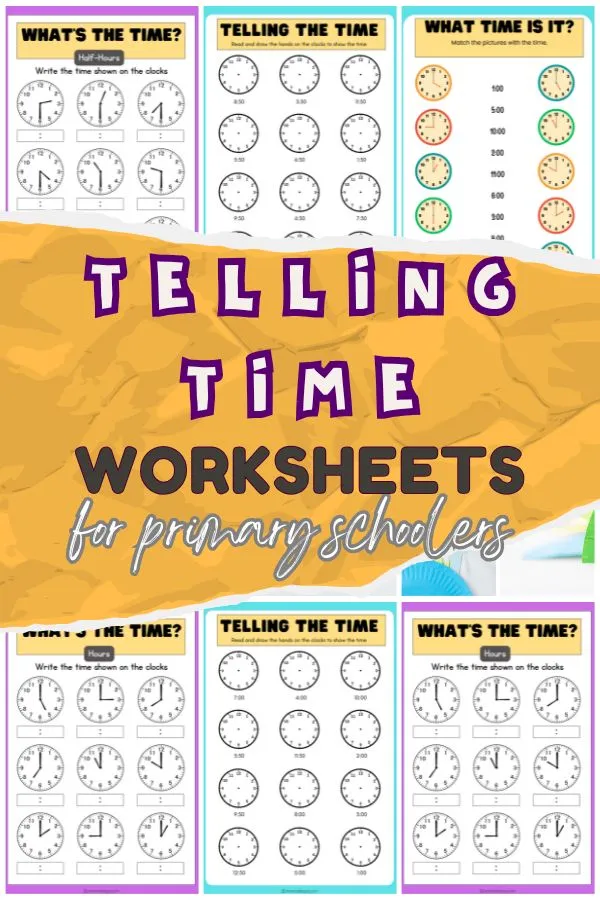Teaching young children to tell time is a critical life skill. Printable telling time worksheets make this learning process hands-on and fun. They help children practice reading clocks and writing the time gradually.
Worksheets usually divide skills into smaller goals, (in this activity it’s hours, half-hours, quarter-hours) helping to reinforce each idea through practice. For example, clock-tracing worksheets ask children to draw the clock hands, building fine motor skills and familiarity with number positions.

Related Articles :
In this post we share free printable telling time worksheets for early primary schoolers, plus teaching tips using play based activities and daily routines.
Printable Telling The Time Worksheets
Writing The Time
These printable worksheets help children learn to read clock faces and write the correct time in hours, half-hours, and quarter hours. They make learning to tell time fun and help reinforce important concepts.



O’clock worksheets : These worksheets ask kids to write the time displayed on the clocks in hours.
Half-hour worksheets : These exercises teach half hours (e.g. 11:30 and 4:30)
Quarter-hour worksheets: These focus on quarter past (15 minutes) and quarter to the hour (45 minutes).
Drawing The hands Worksheets
Clock tracing worksheets let children draw the hour and minute hands, practicing fine motor skills. These worksheets give children blank clock faces to trace and label at specific hours or half-hours.
This activity reinforces their understanding about telling the time. For example, one set of free tracing worksheets has clocks labelled with times like 2:00 and 5:00.


Matching Analogue to Digital Clock
These printable telling the time worksheets are designed to help kids practice matching analogue clocks with the correct written time.

What Other Activities We Can Use
Games with Toy Clocks
Give children toy clocks or paper clock templates. Have them set the clock hands to match daily schedules such as breakfast, recess or bedtime.
These hands-on activities turn time-telling into play and help kids feel how an hour or half-hour looks on a clock.
Daily Routines
Incorporate time-telling in everyday life. Encourage children to check the clock before going to lunch, when a favourite show starts or at bedtime.
Using a visual timer or schedule (e.g. a clock showing snack time) helps kids see time passing in context. Over time, noticing “It’s 8:00 AM, time for school!” makes learning practical.
Start with the basics and build up. Focus first on whole hours (“o’clock”) before adding half-hours, then quarter-hours and five-minute intervals.
Wrapping Up
Learning to tell time requires practice, but with the right strategies and tools, children can learn fast. Use analogue clocks, games, and everyday activities for context, and offer fun printables to support each lesson.
The worksheets above – from tracing clocks to drawing hands – give early learners hands-on practice with both analogue and digital time.
Download and print any of the worksheets and work through them with your child or students. Begin with whole hours and gradually add half-hours and quarter-hours.

Leave a Reply